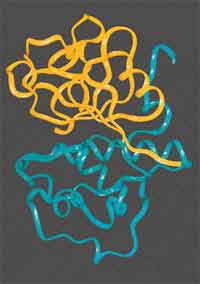by Dr. Tina Marcantel
The use of systemic enzyme therapy can be a good natural alternative to some pharmaceutical drugs for controlling pain, promoting healing, and boosting the immune system. Dr. Tina Marcantel is a naturopathic doctor in Mesa, Arizona, who also serves the East Valley cities of Scottsdale, Tempe, Chandler, Gilbert, Apache Junction, and Queen Creek.
ENZYME THERAPY CASE STUDY:
Treatment for pain and inflammation of rheumatoid arthritis using systemic enzyme therapy.
Mary is a thirty-four year old woman. Her chief complaint was warmth, redness, and swelling of the joints of the hands, finger joints, and feet for the past six months. Four months before seeing me, she had been diagnosed with rheumatoid arthritis by a rheumatologist. She had been taking NSAIDs such as aspirin and ibuprofen approximately five months. She was taking two aspirin tablets (325 mg per tab) four times per day, but was recently advised to increase the dosage for sufficient pain relief. She was also told by her doctor that she would be placed on stronger drugs for pain in the future. Mary was looking for an alternative therapy for pain relief and inflammation.
papain enzyme
I started Mary on systemic proteolytic enzymes administered orally 2 caps 3 times per day, 1-2 hours away from meals. I had her stay on this dose for approximately three weeks then reduced the enzymes to 1 cap 2-3 times per day for a maintenance dose to control pain and inflammation. (Tip: Patients sometimes have trouble remembering to take the doses an hour after and an hour before eating. To increase compliancy I always tell them to take a dose first thing when they wake up and just before they go to bed—then they only have to actually “plan” one more dose during the day.)
In conjunction with enzyme therapy I gave Mary ten weeks of acupuncture for pain control (one treatment per week). We also did a food sensitivity panel and eliminated those foods that may have contributed to the inflammation.
Results:
After ten weeks of treatments Mary reported that she no longer used aspirin or ibuprofen regularly as before. She only needed NSAIDs approximately two doses per week compared to four doses per day. Pain and swelling of the joints had decreased by 70%.
I did not see Mary in my office until six months later. She had been on the maintenance dosage of systemic enzymes, taking 1 cap 2 times/day since I last saw her. Her pain was slowly starting to increase. I told her to begin again using the enzymes 2 caps 3 times/day for 10 days, then once again to return to the maintenance dose. Four weeks after this visit I had a telephone conference with her and she reported improvement with a 70-80% decrease in pain and swelling.
Another reported benefit from the systemic enzymes for Mary was relief from chronic sinusitis from seasonal allergies. She was both surprised and relieved by this anti-inflammatory effect the enzymes had on her sinusitis.






